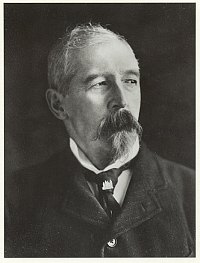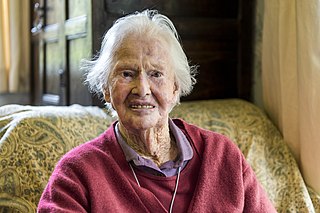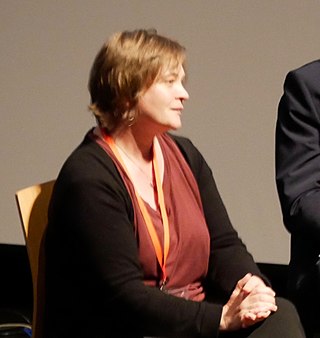Related Research Articles

Lapis lazuli, or lapis for short, is a deep-blue metamorphic rock used as a semi-precious stone that has been prized since antiquity for its intense color. As early as the 7th millennium BC, lapis lazuli was mined in the Sar-i Sang mines, in Shortugai, and in other mines in Badakhshan province in modern northeast Afghanistan. Lapis lazuli artifacts, dated to 7570 BC, have been found at Bhirrana, which is the oldest site of Indus Valley civilisation. Lapis was highly valued by the Indus Valley Civilisation. Lapis beads have been found at Neolithic burials in Mehrgarh, the Caucasus, and as far away as Mauritania. It was used in the funeral mask of Tutankhamun.

Merv, also known as the Merve Oasis, formerly known as Alexandria, Antiochia in Margiana and Marw al-Shāhijān, was a major Iranian city in Central Asia, on the historical Silk Road, near today's Mary, Turkmenistan. Human settlements on the site of Merv existed from the 3rd millennium BC until the 18th century AD. It changed hands repeatedly throughout history. Under the Achaemenid Empire, it was the centre of the satrapy of Margiana. It was subsequently ruled by the ancient Macedonians, Seleucids, Parthians, Sasanians, Arabs, Ghaznavids, Seljuqs, Khwarazmians and Timurids, among others.

Puabi, also called Shubad or Shudi-Ad due to a misinterpretation by Sir Charles Leonard Woolley, was an important woman in the Sumerian city of Ur, during the First Dynasty of Ur. Commonly labeled as a "queen", her status is somewhat in dispute, although several cylinder seals in her tomb, labeled grave PG 800 at the Royal Cemetery at Ur, identify her by the title "nin" or "eresh", a Sumerian word denoting a queen or a priestess. Puabi's seal does not place her in relation to any king or husband, possibly indicating that she ruled in her own right. It has been suggested that she was the second wife of king Meskalamdug. The fact that Puabi, herself a Semitic Akkadian, was an important figure among Sumerians, indicates a high degree of cultural exchange and influence among the ancient Sumerians and their Semitic neighbors. Although little is known about Puabi's life, the discovery of Puabi's tomb and its death pit reveals important information as well as raises questions about Mesopotamian society and culture.
Aratta is a land that appears in Sumerian myths surrounding Enmerkar and Lugalbanda, two early and possibly mythical kings of Uruk also mentioned on the Sumerian king list.

Harold Arthur Lee-Dillon, 17th Viscount Dillon CH FBA was an English antiquary and a leading authority on the history of arms and armour and medieval costume.
Roberta Lynn Gilchrist, FSA, FBA is a Canadian-born archaeologist and academic specialising in the medieval period, whose career has been spent in the United Kingdom. She is Professor of Archaeology and Dean of Research at the University of Reading.
Catherine Anne Morgan, is a British academic specialising in the history and archaeology of Early Iron Age and Archaic Greece. Since 2015, she has been a Senior Research Fellow at All Souls College, Oxford. She was Professor of Classical Archaeology at King's College London from 2005 to 2015, and director of the British School at Athens from 2007 to 2015.
Richard John Bradley, is a British archaeologist and academic. He specialises in the study of European prehistory, and in particular Prehistoric Britain. From 1987 to 2013, he was Professor of Archaeology at the University of Reading; he is now emeritus professor. He is also the author of a number of books on the subject of archaeology and prehistory.
John Joseph Wilkes, is a British archaeologist and academic. He is Emeritus Yates Professor of Greek and Roman Archaeology at University College London.
Cyprian Broodbank, is a British archaeologist and academic. Since October 2014, he has been Disney Professor of Archaeology at the University of Cambridge and director of the McDonald Institute for Archaeological Research. From 2010 to 2014, he was Professor of Mediterranean Archaeology at University College London.
Dame Rosemary Jean Cramp, was a British archaeologist and academic specialising in the Anglo-Saxons. She was the first female professor appointed at Durham University and was Professor of Archaeology from 1971 to 1990. She served as president of the Society of Antiquaries of London from 2001 to 2004.
James Campbell, was a British historian, specialising in the medieval period and the Anglo-Saxons. He was a Fellow of Worcester College, Oxford, from 1957 until his retirement in 2002, and Professor of Medieval History at the University of Oxford from 1996 to 2002.

Nancy Katharine Sandars, was a British archaeologist and prehistorian. As an independent scholar—she was never a university academic—she wrote a number of books and a popular version of the Epic of Gilgamesh.
Julia Steuart Barrow, is an English historian and academic, who specialises in medieval and ecclesiastical history. Since 2012, she has been Professor in Medieval Studies at the University of Leeds and previously served (2012–16) as the Director of the University's Institute for Medieval Studies.
Nancy Margaret Edwards, is a British archaeologist and academic, who specialises in medieval archaeology and ecclesiastical history. Since 2008, she has been Professor of Medieval Archaeology at Bangor University.

Luke John Herrmann was a British art historian who was an expert on the art of J. M. W. Turner.
Bryony Jean Coles, is a prehistoric archaeologist and academic. She is best known for her work studying Doggerland, an area of land now submerged beneath the North Sea.
Mary Teresa Josephine Webber, is a British palaeographer, medievalist, and academic. She has been a Fellow of Trinity College, Cambridge since 1997 and Professor of Palaeography at the Faculty of History, University of Cambridge since 2018. Webber studied Modern History as an undergraduate at Somerville College, Oxford.
Marie Louise Stig Sørensen is a Danish archaeologist and academic. She is Professor of European Prehistory and Heritage Studies at the University of Cambridge and a Professor of Bronze Age Archaeology at the University of Leiden. Her research focuses on Bronze Age Europe, heritage, and archaeological theory.

Melanie Giles is a British archaeologist and academic, specialising in Iron Age Britain. She is a Professor in European Prehistory at the University of Manchester.
References
- 1 2 "Herrmann, Georgina". Who's Who 2018 . Oxford University Press. 1 December 2017. doi:10.1093/ww/9780199540884.013.19951. ISBN 978-0-19-954088-4.(subscription required)
- 1 2 "Dr Georgina Herrmann (Biographical details)". The British Museum. Trustees of the British Museum. Archived from the original on 2 May 2018. Retrieved 1 May 2018.
- 1 2 3 4 5 6 7 8 "Herrmann, Georgina, (born 20 Oct. 1937), Reader in the Archaeology of Western Asia, University College London, 1993–2002, Visiting Hon. Research Professor, 2002–20, Emeritus Reader, since 2020". Who's Who 2021 . Oxford University Press. 1 December 2020. Retrieved 2 May 2022.
- ↑ Herrmann, Georgina (1967). The source, distribution, history and use of Lapis Lazuli in western Asia from the earliest times to the end of the Seleucid era. E-Thesis Online Service (Ph.D). The British Library Board. Retrieved 2 May 2022.
- ↑ Aruz, Joan; Fino, Elisabetta Valtz (2012). Afghanistan: Forging Civilizations Along the Silk Road. Metropolitan Museum of Art. p. 21. ISBN 978-1-58839-452-1.
- ↑ Herrmann, Georgina (1968). "Lapis Lazuli: The Early Phases of Its Trade". Iraq . 30 (1): 21–57. doi:10.2307/4199836. JSTOR 4199836. S2CID 130955760.
- ↑ "Dr Georgina Herrmann FBA". The British Academy. Archived from the original on 2 May 2022. Retrieved 2 May 2022.
- 1 2 "Treasures in the desert". Rolex Awards. 1996. Archived from the original on 2 May 2022. Retrieved 2 May 2022.
- 1 2 "Dr Georgina Herrmann". British Academy. Retrieved 1 May 2018.
- ↑ "Luke Herrmann". The Times. 30 September 2016. Retrieved 2 May 2022.
- ↑ "Fellows Directory - Herrmann". Society of Antiquaries of London. Retrieved 1 May 2018.
- ↑ "Georgina Herrmann : Profile". Rolex Awards for Enterprise. 2009. Retrieved 1 May 2018.
- ↑ "The 98th Annual Meeting of the Archaeological Institute of America". American Journal of Archaeology. 101 (2): 331–393. 1 April 1997. doi:10.2307/506513. JSTOR 506513. S2CID 245264875.